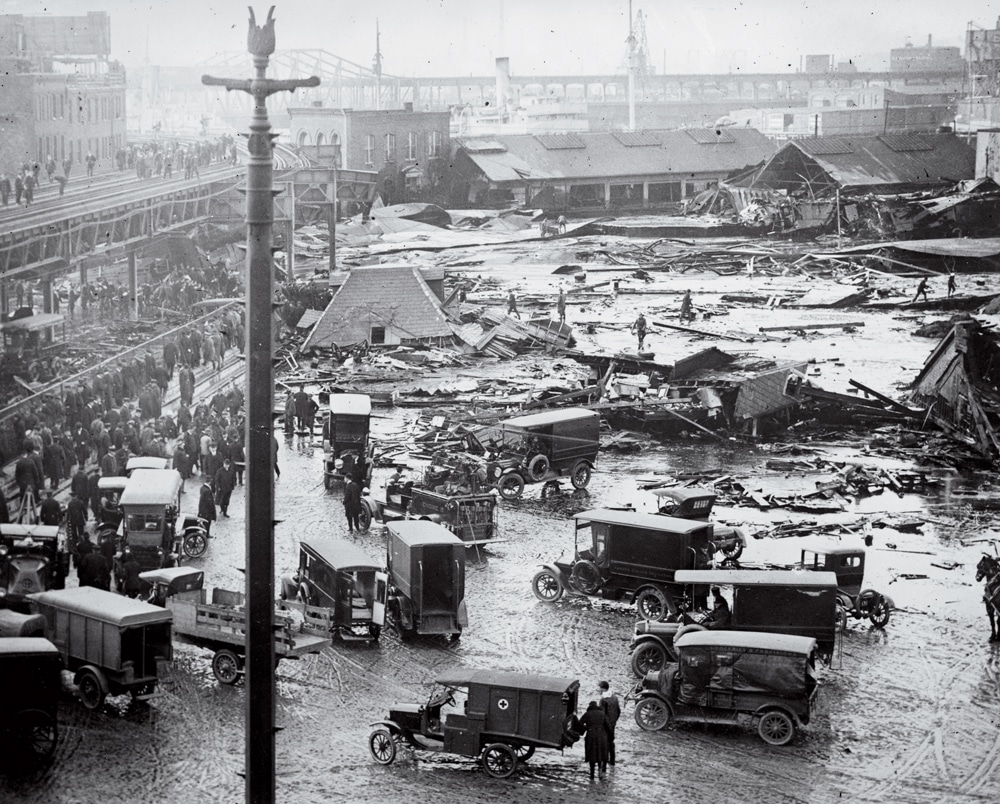Sticking Power | Timeless New England
Remembering Boston’s Great Molasses Flood, a freak accident that still fascinates scientists and storytellers a century later.

Coffee By Design | Portland, Maine
Photo Credit : Katherine Keenan
Photo Credit : Library of Congress, Prints & Photographs Division, American National Red Cross Collection
One hundred years ago on January 15, the cadets aboard the USS Nantucket broke off their training to rush to the aid of drowning victims. But instead of steaming from their Boston Harbor berth to a disaster at sea, the 116 sailors rushed down the gangplank and into the streets of Boston’s North End, which had just been devastated by a tidal wave the likes of which had never been seen before—namely, 2.3 million gallons of molasses.
The source of the gooey tsunami was a five-story steel tank owned by Purity Distilling, which used molasses to make rum as well as alcohol for munitions. The company had built the tank a few years earlier on a Commercial Street lot (today the site of Langone Park) and, in a grim foreshadowing, painted it brown to disguise the molasses leaks that plagued the structure almost from the start.
When the tank ruptured at about 12:40 p.m. that fateful Wednesday in 1919, molasses spewed out in a 25-foot-high wave that traveled up to 35 mph and inundated the neighborhood. It knocked a fire station off its foundations and buckled the steel girders beneath elevated railroad tracks—“as if by the smash of a giant’s fist,” wrote the Boston Post. All told, 21 people were killed and 150 were injured, while property damage reached an estimated $100 million in today’s dollars.
Decades later, new chapters in this bizarre tragedy are still being written. In 2004, Massachusetts historian Stephen Puleo published a best-selling account called Dark Tide, which mined fresh details from court papers that had been buried in archives for 85 years. A 2014 engineering investigation into why the tank failed found that its walls were far too thin and made from a steel susceptible to fracture (the same type used on the Titanic, it turns out). Two years later, Harvard researchers delved into fluid dynamics to show why the wave of molasses had been so deadly. And just last May, the historical musical Molasses in January premiered off-Broadway—a testament to the Great Molasses Flood’s power to grip people’s imaginations, even a century on. —Jenn Johnson
Dark Tide author Stephen Puleo will give a talk at the Boston Public Library on 1/15, the centennial of the flood. For details, go to bpl.org.







